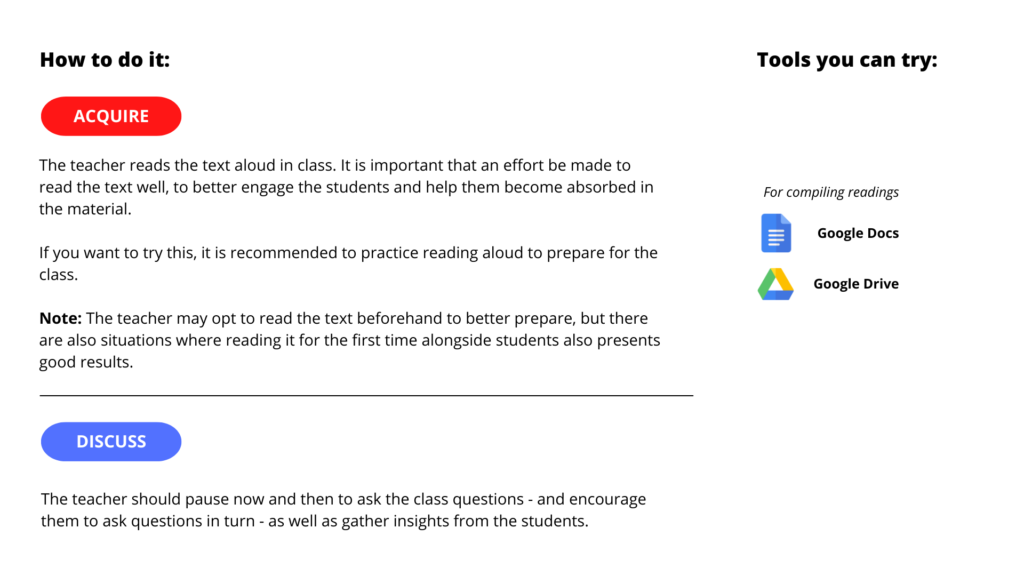Guide your students through difficult text by using storytelling to facilitate class discussions.
Details
Professor: Sir Dean Mejos
Subject: PHL113 – Ethics of Community and Family
Intended Learning Outcome: Help students gain a deeper and richer appreciation of the reading(s).

Feedback and Comments
- Here are some comments from Sir Dean:
- A good teacher, like a good guide, does not necessarily make the journey easy, but he/she makes it more meaningful and more beautiful. I consider the activity as a little more than just the teacher reading the text to the students while the students follow along quietly because an audiobook or some text-to-speech program can do exactly that. A good guide knows the way or, at the very least, knows how to find a way, better than those he/she is guiding.
- There are times in which I’ve read the text in advance, but there are also times when I am reading it for the very first time as I am with the students. Either way works out fine, because it can be treated as a journey, but what is also important is the interaction that takes place between the teacher and the student(s). The point of guided reading (for me, at least) is to give life to the text.
- The first step to do this is by reading it out loud. Here, the text is not only written but also spoken. In addition, reading alone is not enough – it must be read well by the teacher. A good storyteller is good not only because he/she is reading a good story, but also because he is reading the story (no matter how bad) well. One needs to be eloquent too even when reading highly technical text. It might not be a story that’s being read, but it can be told like a story.
- The aim is reaching a deeper and richer appreciation of the reading(s) at the end. As we all know, it might not always end up with agreement or consensus, but at the very least, everyone should gain a good understanding of the material being studied.
Other notes
- This design pattern is commonly found in literature classes, but as Sir Dean points out, this design pattern can also be used for more technical subjects. For example, Dr. Celerino Tiongco uses a similar form of guided reading in his management, leadership, and education-centered courses – though instead of him reading aloud, he has the students read short articles in class, then share their insights with one another.
U.N.I.T.A.S. Design Principles demonstrated in this design pattern
| Understands the learner | This design pattern understands that students appreciate the opportunity to read together with the professor, as it allows them to have in-class discussions. |
| Inspires curiosity and self-development | By allowing the students the avenue to voice their insights and questions in class, they are able to learn more from the unique perspectives of both their professor and fellow students. |
| Thoughtfully done | This activity needs thorough preparation to ensure students will be engaged, but it is well worth it if it produces insightful discussions in class. |
| Achieves learning goals | Students are able to get a deeper understanding of the material through interaction with not only the text, but their professor and fellow students. |
